[javascript protected email address]
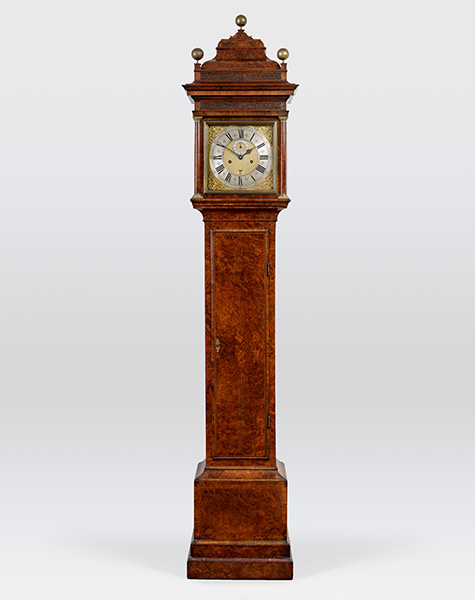
Daniel Quare, London

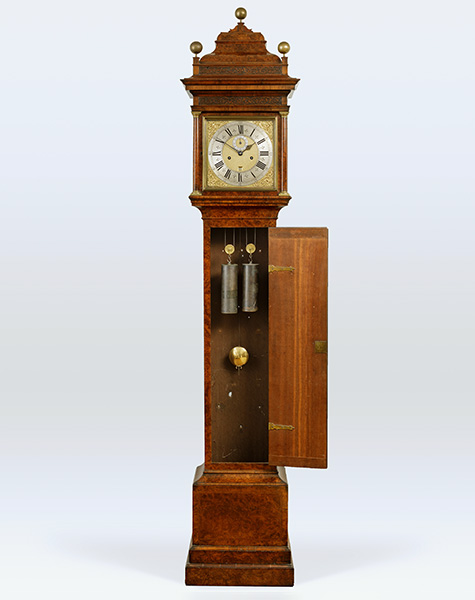
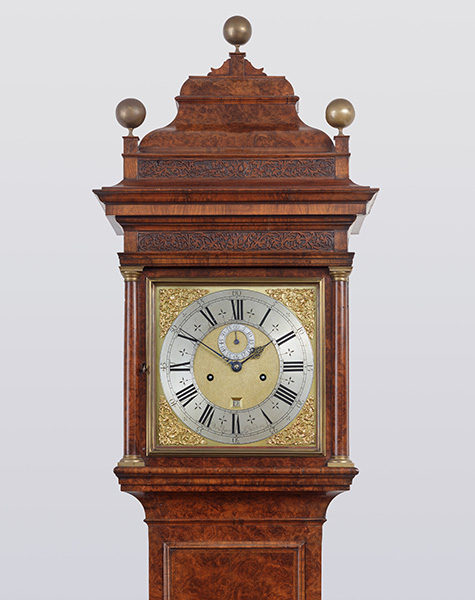
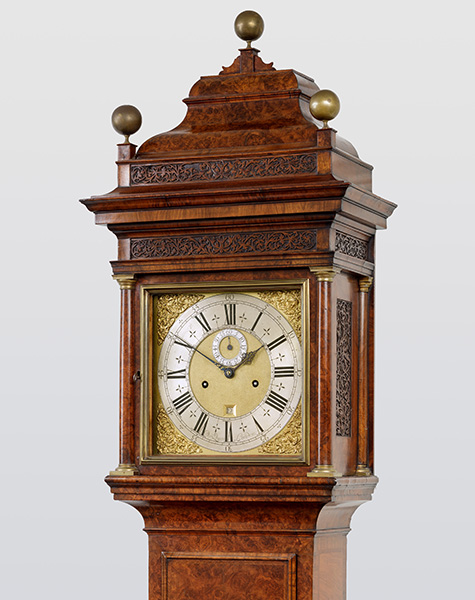
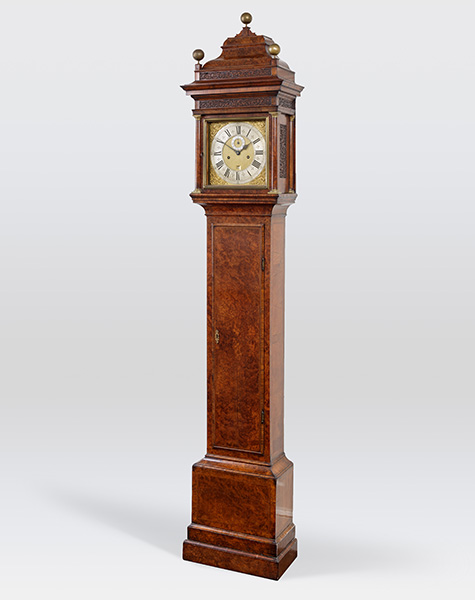
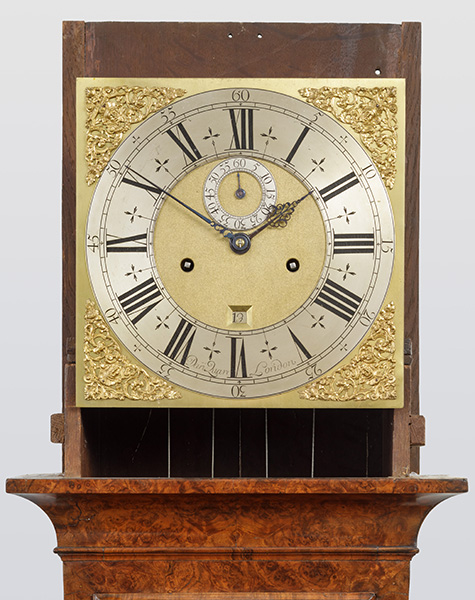
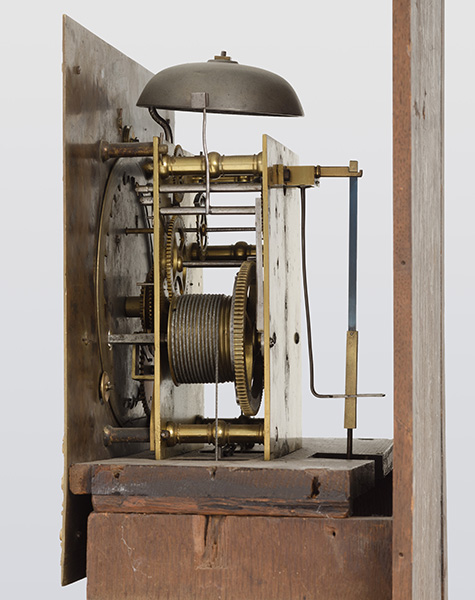
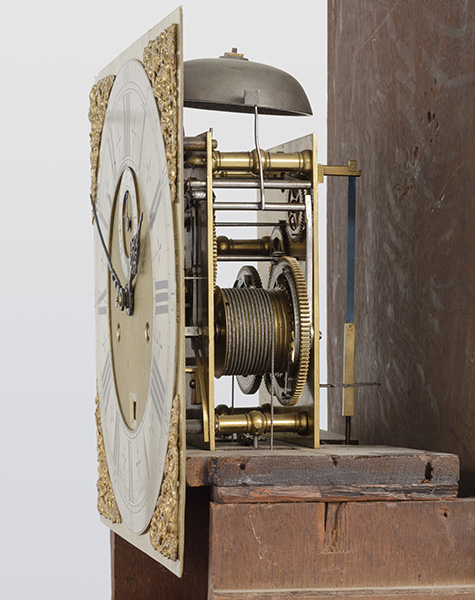
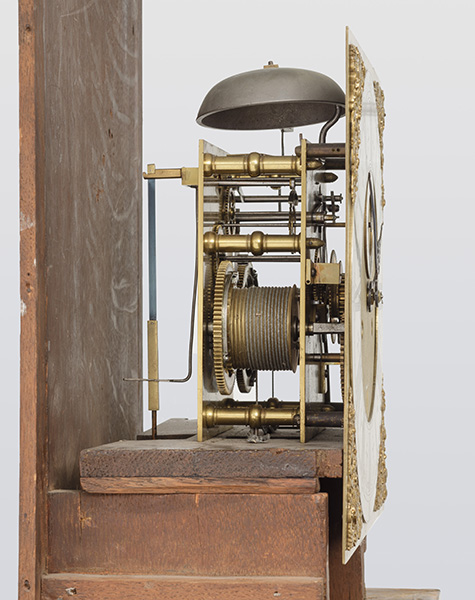
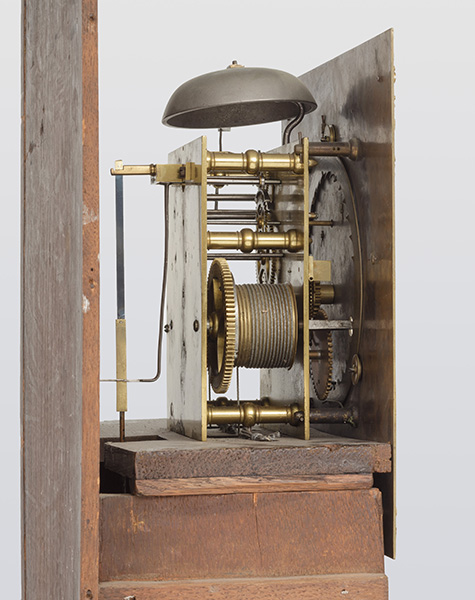
Circa 1695
Sold
8 foot 9inches high
An exceptional quality burr walnut month-going longcase clock. CASE The case has a double skirted foot to the plinth with herringbone inlay to the front panel, convex moulding beneath the trunk door with a dine quality foliate escutcheon, the hood with a fine thick gilt-brass moulding framing the dial flanked by gilt-brass capped three-quarter columns with similar quarter columns to the back, foliate pierced walnut sound frets to the friezes surmounted by the original ogee-moulded caddy top with the original brass ball finials. DIAL The 12 inch gilt-brass dial is signed Dan Quare, London on the silvered brass chapter ring engraved with Roman and Arabic chapters with sword-hilt half hour markers the finely matted centre has a calendar aperture and silvered seconds ring, Indian mask-and-foliate spandrels, MOVEMENT The substantial movement has five ringed pillars, anchor escapement and rack strike on the bell above, original seatboard Daniel Quare, 1647-1724, was one of England's greatest clockmakers from the 'golden era' of English clockmaking. A Quaker by religion he is recorded as resisting various minor laws such as refusing to pay a rate for the maintenance of the Clergy and for refusing to pay charges towards the up-keep of the militia. Despite these minor indiscretions a picture emerges of a man full of character and with a shrewd business mind. His success is often compared to the quality of the guests at his daughter's wedding who included such dignitaries as the Envoys from Florence, Hanover and Prussia, the Earl of Orrery, the Duke of Argyll and the Duchess of Marlborough, not to mention the Prince of Wales. The present clock is a wonderful example of Quare's ability to be able design a clock that commands enormous presence; his month-going longcase clocks from this period were often larger and grander than many of his contemporaries. The reason for this was that many of Quare's clients were enormously wealthy patrons of the Arts who were intent on building vast new town and country houses. These houses were built by such pre-eminent architects as William Talman (Drayton House, Northants), Sir Christopher Wren (Marlborough House, St. James's, London) and Sir John Vanbrugh & Nicholas Hawksmoor (Castle Howard, Yorkshire). It was the national duty for these wealthy patrons to fill their new built houses with the fashionable furniture and decoration of the day. In the case of Drayton House, William Talman commissioned Thomas Tompion to make what is now known as The Drayton Tompion and for refurbishing Hampton Court, Sir Christopher Wren appears to have commissioned both Tompion and Daniel Quare. The wonderful gilt-metal moulding around the dial is a speciality that was only occasionally used by Quare and always to considerable effect; the boldness of the moulding acts like a picture frame and brings the dial to life. It would have been an expensive addition and probably only used on his best clocks. Perhaps the most famous example by Quare is the year-going longcase clock with the equation dial in the trunk, in the British Museum, and formerly in the Ilbert collection. In this instance both the rectangular dial and the trunk are embellished with a gilt-metal frame. Another example of its use is on the three-month longcase clock by Thomas Tompion made for King William III and now at Hampton Court Palace.
